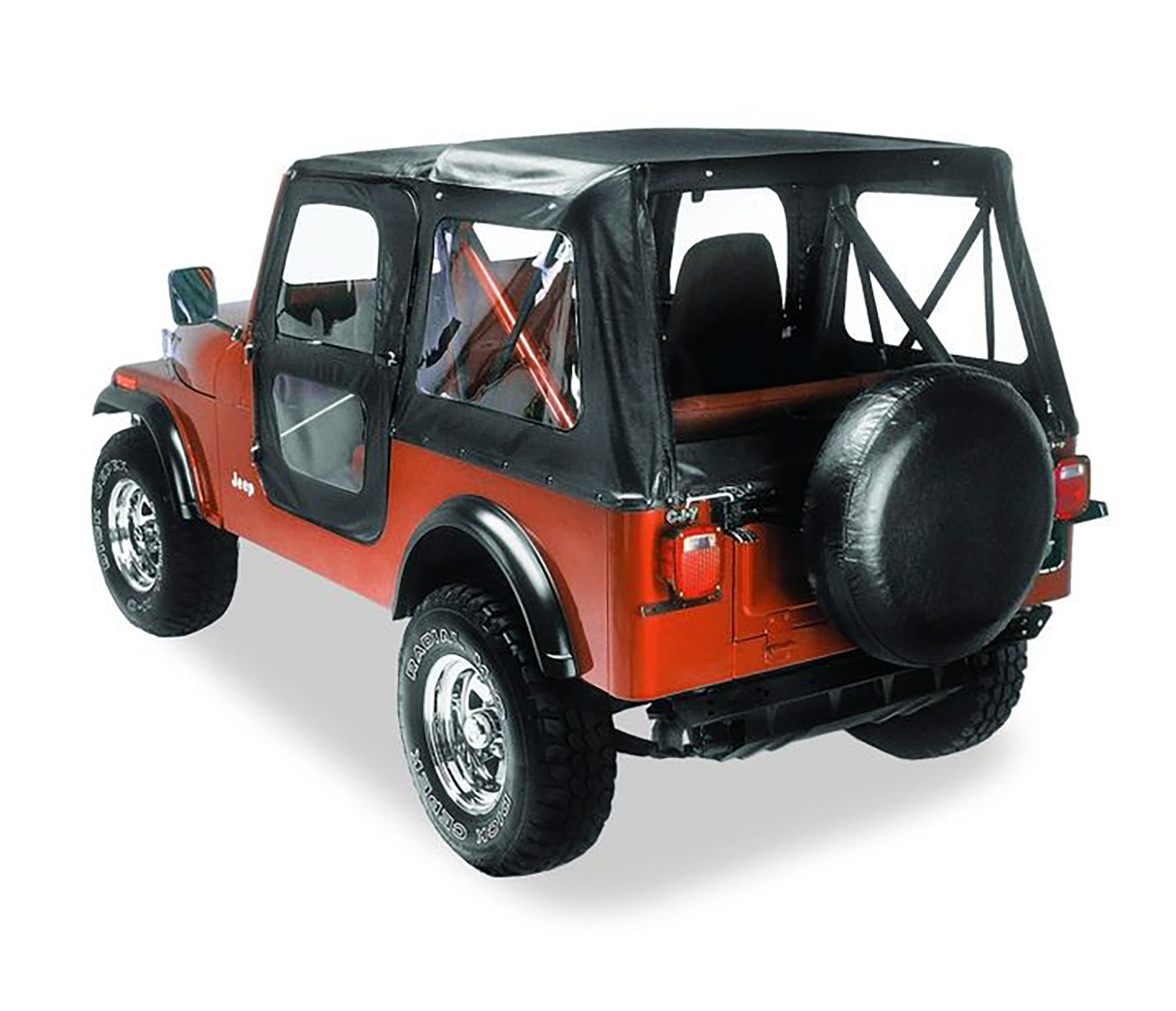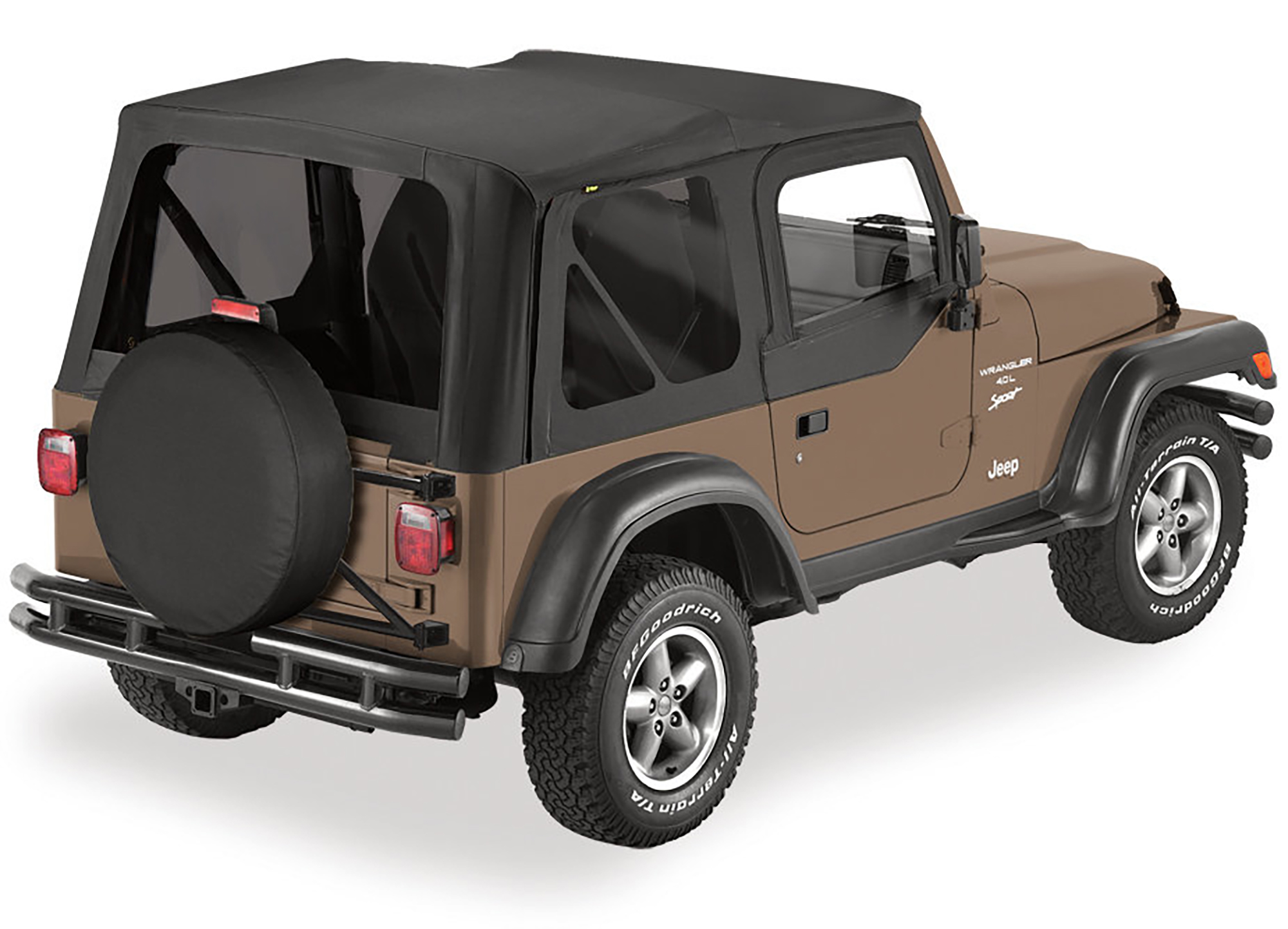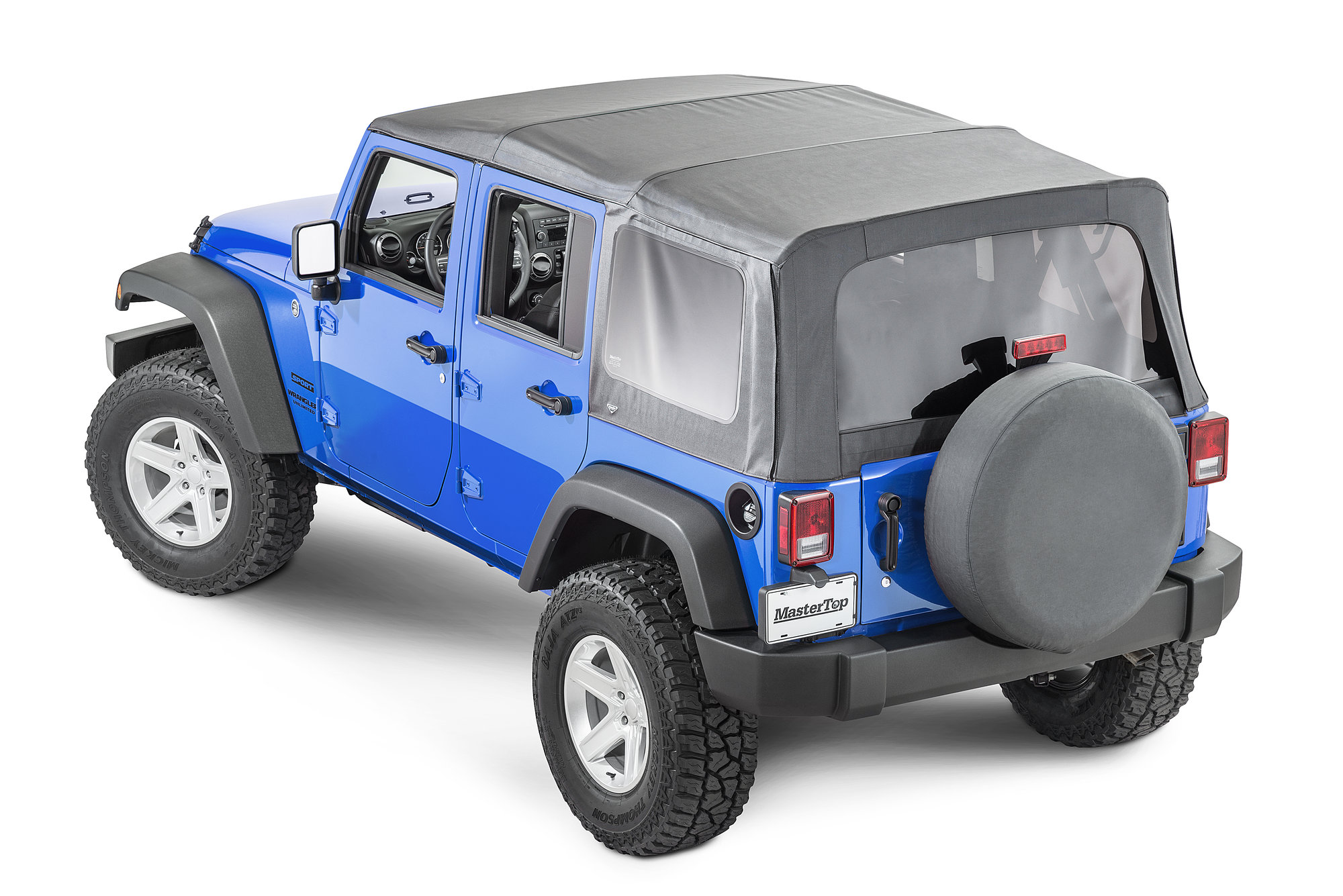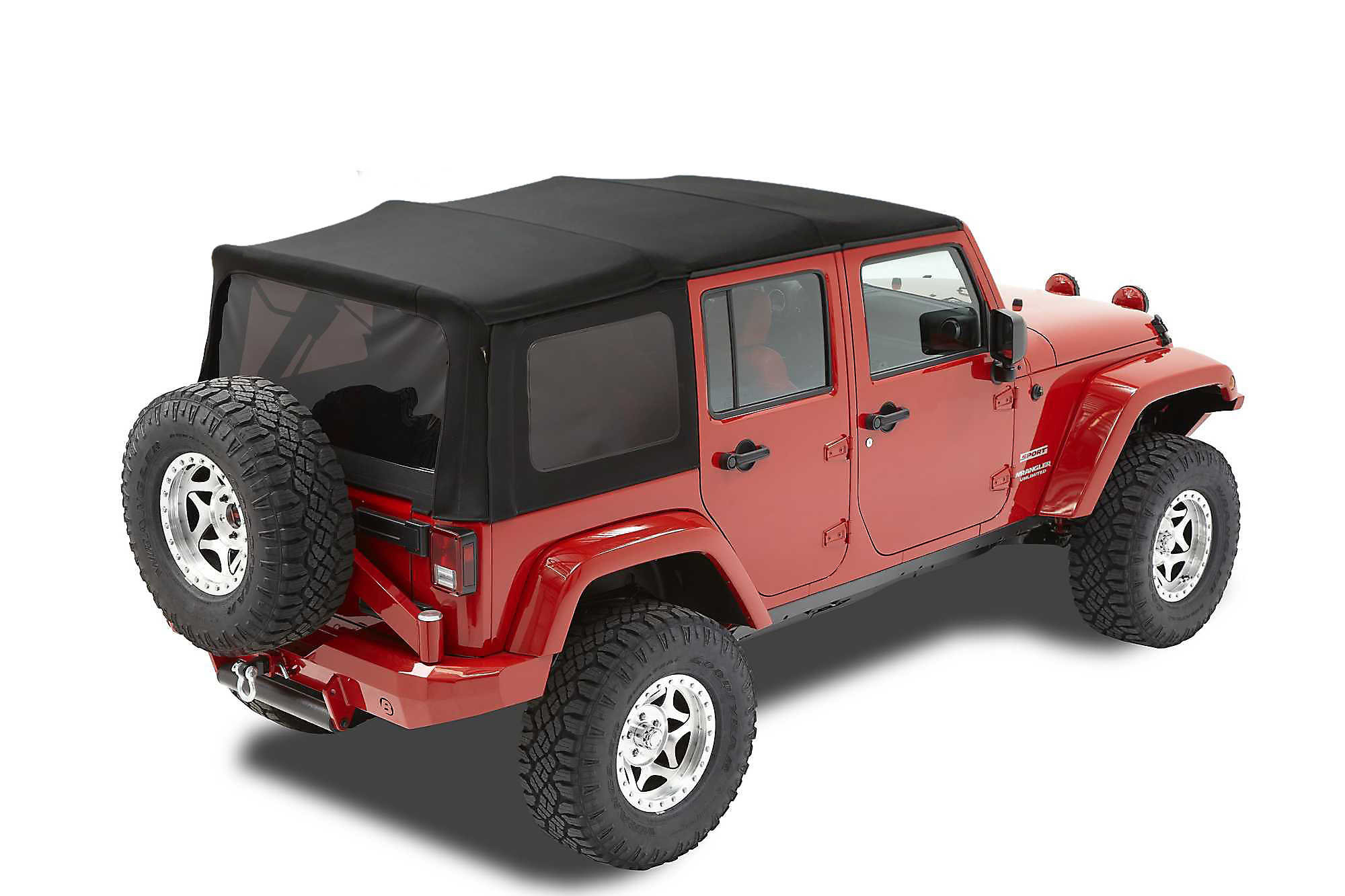Torque Staff Report
Maybe you first saw it when you were building a Wrangler on Jeep’s website and came across two simple words that describe the vehicle’s soft top. Premium or base.
Perhaps it came while researching a new soft top to replace your current edition, only to realize that the terminology these days and top material names make choosing something a bit more difficult than, say, just picking one that looks nice.
Stuff like mil rates or ounce thickness, Twill, Sailcloth, Vinyl and Denim are all out there as terms to totally give your new soft top some character.
That’s right, if you didn’t know already, soft tops are not simply constructed with just one type of fabric. And sometimes trying to decide on just the right one often leads to more questions than answers. Thick or thin? Vinyl or fabric? Which style is best? Or the most quiet? Which one matches the factory top?
So before you get paralysis by analysis when looking at all the options, let’s take a few minutes to go over the different types of Jeep soft top materials as see what may works best for you.
And truthfully, there really isn’t one single absolute answer between any of these different material types. Because what works great for one person may not make sense for another. After all, many of us out there use our Jeeps differently, right?
Determining which type is best really ends up like a lot of other vehicle modification choices — meaning it is more of a personal decision that can also fall under the ‘how much do I really plan on using the thing’ rational.
Here are the different Jeep soft top material options:
Vinyl

First up is vinyl, which is considered the original soft top material for anyone who owns a CJ or early-model year YJ Wrangler. This type of top has a somewhat smooth plastic-like texture and sheen finish, and sports an exterior vinyl layer and interior layer of cloth. Vinyl tops are usually considered marine grade, meaning they have treated to resist the elements while being fairly simple to clean vs. other material tops.
Normally, vinyl tops have an 18 oz. fabric weight that puts the material on the thinner edge of soft top density compared to other materials, while still being considered excellent for weatherability, UV resistance and durability. However, that thin wall does allow a bit more road and wind noise into the cabin while driving—something other, thicker, tops suppress. Regardless, vinyl does remain a popular look for anyone who loves that sharp, classic appearance.
Denim

Next up is denim soft top material, which looks and feels similar to a pair of jeans. This is a widely popular textured fabric that came standard on most YJ and TJ Wranglers, and is comprised of a vinyl-coated polyester and cotton mix. It also offers the same weather, UV resistance and durability of vinyl. The original factory edition denim tops were not any thicker than previous vinyl versions, still weighing in at 18 oz., but today’s replacement denim versions can have a material weight between 18- and 23-oz. depending on the top manufacturer. This allows buyers to still maintain a factory look, but with better noise reduction and durability.
Either of those two materials, vinyl and denim, are normally the most affordable on the market, and are designed—if you already have the soft top hardware—to simply replace the existing canvas. If you are removing a hardtop, then a full replacement soft top, including hardware and material, is the best alternative.
However, those looking for something even more durable and quiet than vinyl or denim, and a quieter ride, may be better served by a higher-quality top material like Sailcloth or Twill.
Sailcloth

This fabric offers three layers of weight, with two exterior vinyl ones for weatherproofing and noise deadening, and an under layer of poly/cotton substrate designed to stabilize and reinforce the overall fabric. All of this combines to form a 28 oz. thick barrier that is 50 percent quieter than regular vinyl or denim. This material does cost more than vinyl or denim, so it may not make sense if your vehicle is merely a weekend driver or trail only, but anyone who is a daily driver certainly will notice a significant difference in ride quality.
Additionally, Sailcloth provides superior weather, UV and abrasion protection, and the material itself also resists temperature-related shrinkage while better protecting against waves or wrinkles. First appearing on the 2001 TJ Wrangler, Sailcloth provides an overall ride quality nearly equal to a hard top, and was considered the most durable soft top of all time.
That is, until Mopar developed twill fabric.
Twill

Twill is the best of the best in soft top material, and is something many high-end sports cars and luxury convertible manufacturers utilize for their vehicles’ soft tops. It consists of three material layers—an external twill fabric, a center butyl rubber for waterproofing and a finished twill on the inside—in order to achieve an industry-best 30 oz. density.
While this may seem like overkill for Jeep owners accustomed to continual road noise, Twill can actually be a huge benefit for everyday drivers as it provides the ultimate in sound reduction and durability, as well as superior cold weather performance and interior insulation. And yet, despite this ultra-thick material, Twill tops are softer and more flexible than Sailcloth, so they are easier to maneuver and better resist cuts and wrinkles compared to any other top.
Of course, these first-rate features do put Twill tops at the high end of the price spectrum so it is certainly advisable to run a cost-benefit analysis to determine if it is something that fits your overall needs.
Related Articles:
How Do I Remove My Jeep Doors?
Five Important Things To Know Before Going Off-Road In Your Jeep





















